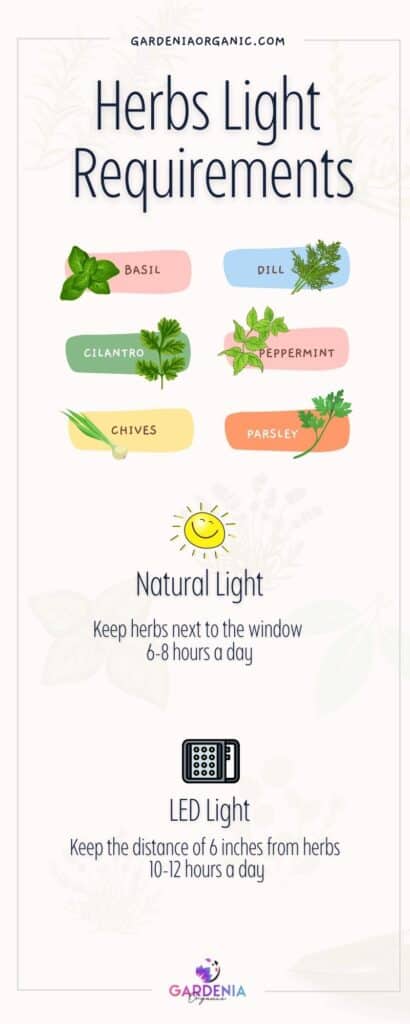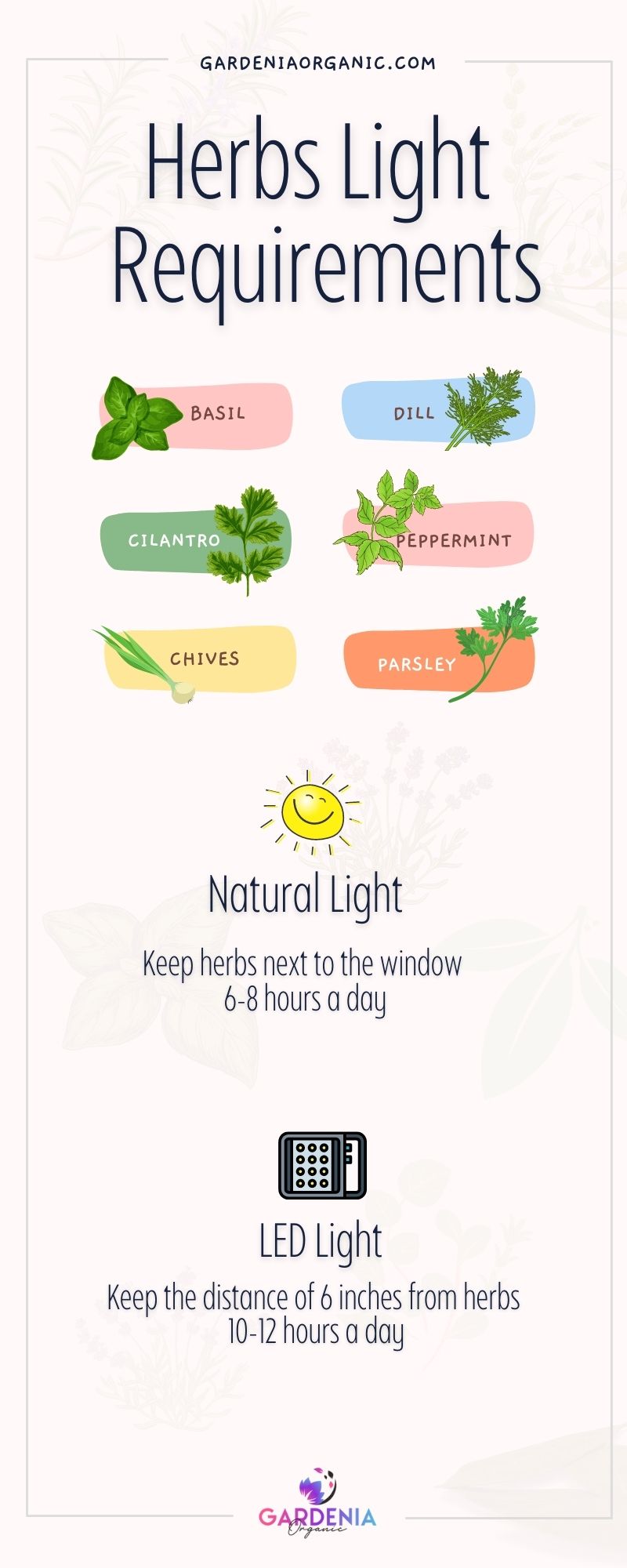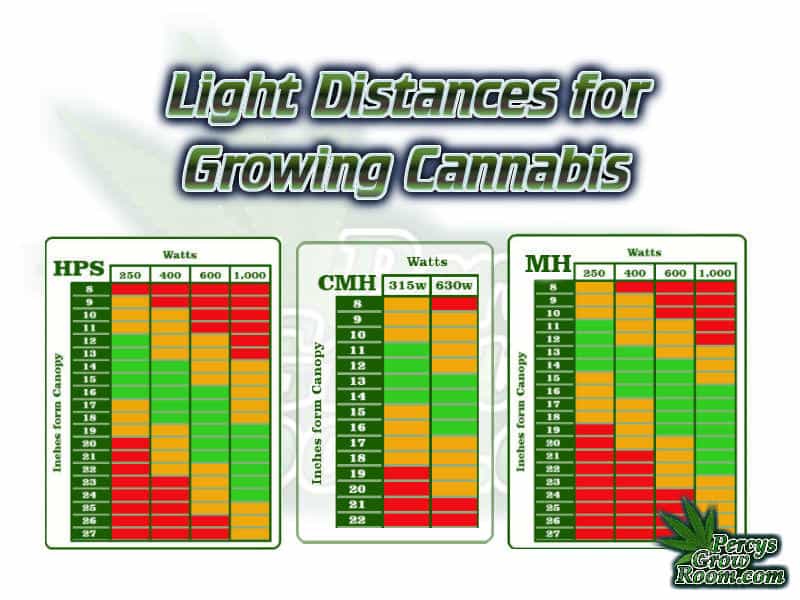Why Lighting is Crucial for Herb Development
Light is one of the most critical factors in herb growth, playing a vital role in photosynthesis, plant development, and flavor/aroma production. Herbs need light to undergo photosynthesis, the process by which they convert light energy into chemical energy. This energy is then used to fuel growth, development, and reproduction. Without sufficient light, herbs may become weak and leggy, with reduced flavor and aroma.
In addition to photosynthesis, light also influences herb growth by regulating the production of chlorophyll, the green pigment responsible for absorbing light energy. Chlorophyll is essential for herb growth, and its production is directly affected by the amount and quality of light the plant receives. Herbs grown in low-light conditions may produce less chlorophyll, leading to weak and spindly growth.
Furthermore, light affects the production of essential oils and flavor compounds in herbs. Many herbs, such as basil and rosemary, produce these compounds in response to light exposure. Without sufficient light, the production of these compounds may be reduced, resulting in herbs with less flavor and aroma.
Understanding the importance of light for herb growth is crucial for providing the right conditions for optimal development. By recognizing the role of light in herb growth, gardeners and indoor growers can take steps to ensure their herbs receive the right amount and quality of light. This may involve adjusting the placement of herbs in relation to light sources, using grow lights, or selecting varieties that are tolerant of low-light conditions.
When it comes to determining how much light herbs need, it’s essential to consider the specific lighting requirements of each variety. Some herbs, such as mint and lemongrass, can thrive in partial shade, while others, like basil and rosemary, require full sun to produce well. By understanding the unique lighting needs of each herb, growers can provide the optimal conditions for healthy growth and development.
How Much Light Do Herbs Need: A General Guide
When it comes to determining how much light herbs need, it’s essential to consider the specific lighting requirements of each variety. While some herbs can thrive in partial shade, others require full sun to produce well. Here’s a general guide to the lighting requirements of popular herbs:
Basil, for example, requires at least 4-6 hours of direct sunlight per day to produce well. Mint, on the other hand, can tolerate partial shade and requires only 2-4 hours of direct sunlight per day. Rosemary and thyme, which are Mediterranean herbs, require full sun to produce well and can tolerate high temperatures.
It’s also important to note that the type of light herbs receive is just as important as the amount of light. Direct sunlight, indirect sunlight, and artificial lighting all have different effects on herb growth. Direct sunlight is the most intense and can promote healthy growth, but it can also cause scorching if herbs are not acclimated to it. Indirect sunlight, on the other hand, is gentler and can promote healthy growth without the risk of scorching.
Artificial lighting, such as LED grow lights, fluorescent lights, and HPS (High Pressure Sodium) lights, can also be used to provide herbs with the light they need. These lights can be especially useful for indoor growers who don’t have access to natural light. However, it’s essential to choose the right type of light for the specific herb variety, as some herbs may not respond well to certain types of light.
In general, herbs can be divided into three categories based on their lighting requirements: full sun, partial shade, and shade. Full sun herbs, such as basil and rosemary, require at least 6 hours of direct sunlight per day. Partial shade herbs, such as mint and lemongrass, require 2-4 hours of direct sunlight per day. Shade herbs, such as parsley and chives, require less than 2 hours of direct sunlight per day.
By understanding the specific lighting requirements of each herb variety, growers can provide the optimal conditions for healthy growth and development. This, in turn, can lead to higher yields and better flavor and aroma. So, how much light does herbs need? The answer depends on the specific herb variety, but with this general guide, growers can make informed decisions about the lighting needs of their herbs.
Assessing Your Herb’s Lighting Needs: Factors to Consider
When determining how much light your herbs need, it’s essential to consider several factors that can influence their lighting requirements. These factors include the type of herb, climate, time of year, and container size. By understanding how these factors impact your herbs’ lighting needs, you can provide the optimal conditions for healthy growth and development.
The type of herb is a critical factor in determining its lighting needs. Different herbs have varying levels of tolerance to light, and some may require more or less light than others. For example, herbs like basil and rosemary require full sun to produce well, while herbs like mint and lemongrass can tolerate partial shade.
Climate is another important factor to consider when assessing your herb’s lighting needs. Herbs grown in hot and dry climates may require more shade to prevent scorching, while herbs grown in cool and cloudy climates may require more light to promote healthy growth. Understanding the climate in your area and how it impacts your herbs’ lighting needs can help you provide the optimal conditions for growth.
The time of year is also a critical factor in determining your herb’s lighting needs. During the summer months, herbs may require more shade to prevent scorching, while during the winter months, they may require more light to promote healthy growth. By adjusting the lighting conditions based on the time of year, you can ensure that your herbs receive the right amount of light for optimal growth.
Container size is another factor to consider when assessing your herb’s lighting needs. Herbs grown in small containers may require more light than those grown in larger containers, as the soil can dry out quickly and the roots may not have enough room to grow. By choosing the right container size for your herbs, you can ensure that they receive the right amount of light for optimal growth.
Observing your herbs’ responses to different lighting conditions is also essential in determining their lighting needs. By monitoring your herbs’ growth, color, and overall health, you can determine whether they are receiving too much or too little light. If your herbs are receiving too much light, they may become scorched or discolored, while if they are receiving too little light, they may become weak and leggy.
By considering these factors and observing your herbs’ responses to different lighting conditions, you can determine how much light your herbs need and provide the optimal conditions for healthy growth and development. This, in turn, can lead to higher yields and better flavor and aroma.
Direct Sunlight vs. Indirect Sunlight: What’s Best for Herbs
When it comes to providing light for herbs, there are two main options: direct sunlight and indirect sunlight. Both options have their benefits and drawbacks, and the best choice for your herbs will depend on the specific variety, climate, and growing conditions.
Direct sunlight is the most intense and concentrated form of light, and it can be beneficial for herbs that require a lot of light to grow. Herbs like basil, rosemary, and thyme thrive in direct sunlight and can produce well in conditions with at least 6 hours of direct sunlight per day. However, direct sunlight can also be harsh and may cause scorching or discoloration on herbs that are not adapted to it.
Indirect sunlight, on the other hand, is a more gentle and diffuse form of light that can be beneficial for herbs that prefer partial shade. Herbs like mint, lemongrass, and chamomile prefer indirect sunlight and can produce well in conditions with 2-4 hours of indirect sunlight per day. Indirect sunlight can also help to prevent scorching and promote healthy growth.
To filter direct sunlight and prevent scorching, you can use sheer curtains or shades. These can be placed over windows or grow lights to reduce the intensity of the light and provide a more gentle and diffuse illumination. This can be especially useful for herbs that prefer partial shade or are sensitive to direct sunlight.
Another option is to use a combination of direct and indirect sunlight. This can be achieved by placing herbs in a location that receives direct sunlight for part of the day and indirect sunlight for the rest of the day. This can provide the best of both worlds and promote healthy growth and development.
Ultimately, the choice between direct sunlight and indirect sunlight will depend on the specific needs of your herbs. By understanding the lighting requirements of your herbs and providing the right amount and type of light, you can promote healthy growth and development and maximize yields.
When deciding how much light your herbs need, it’s essential to consider the specific variety, climate, and growing conditions. By providing the right amount and type of light, you can promote healthy growth and development and maximize yields. Whether you choose direct sunlight, indirect sunlight, or a combination of both, the key is to provide the optimal lighting conditions for your herbs to thrive.
Artificial Lighting Options for Herbs: LED, Fluorescent, and More
When it comes to providing light for herbs, artificial lighting options can be a great alternative to natural light. There are several types of artificial lighting options available, each with its own pros and cons. In this section, we’ll discuss the most common artificial lighting options for herbs, including LED grow lights, fluorescent lights, and HPS (High Pressure Sodium) lights.
LED grow lights are a popular choice for herb growers due to their energy efficiency and customizable spectrum. They are available in a range of colors, including blue, red, and purple, and can be tailored to specific herb varieties. LED grow lights are also relatively cool, which means they can be placed closer to the plants without causing damage.
Fluorescent lights are another popular option for herb growers. They are relatively inexpensive and come in a range of colors, including T5 and T8. Fluorescent lights are also energy efficient and can be used to promote healthy growth and development in herbs.
HPS (High Pressure Sodium) lights are a type of high-intensity discharge (HID) light that is commonly used for herb growth. They are available in a range of wattages, including 150W, 250W, and 400W, and are known for their high intensity and long lifespan. HPS lights are also relatively inexpensive and can be used to promote healthy growth and development in herbs.
Other artificial lighting options for herbs include induction lights, plasma lights, and ceramic metal halide (CMH) lights. Each of these options has its own pros and cons, and the best choice will depend on the specific needs of your herbs.
When choosing an artificial lighting option for your herbs, it’s essential to consider the specific lighting requirements of the variety you are growing. Different herbs have different lighting needs, and providing the right amount and type of light can make all the difference in terms of growth and development.
It’s also important to consider the distance between the light and the plants, as well as the duration and intensity of the light. Providing too much light can cause damage to the plants, while providing too little light can result in weak and leggy growth.
By understanding the different artificial lighting options available for herbs and choosing the right one for your specific needs, you can promote healthy growth and development and maximize yields.
How to Use Grow Lights for Herbs: Tips and Tricks
Using grow lights for herbs can be an effective way to provide the right amount and type of light for optimal growth and development. However, it’s essential to use grow lights correctly to avoid over-lighting or under-lighting your herbs. Here are some tips and tricks for using grow lights for herbs:
Distance: The distance between the grow light and the herbs is critical. If the light is too close, it can cause burning or scorching, while if it’s too far away, it may not provide enough light. A general rule of thumb is to keep the grow light 6-12 inches away from the herbs.
Duration: The duration of the light cycle is also important. Most herbs require 12-14 hours of light per day, but some may require more or less. It’s essential to research the specific lighting requirements of the herb variety you are growing.
Intensity: The intensity of the grow light is also crucial. If the light is too intense, it can cause burning or scorching, while if it’s too weak, it may not provide enough light. A general rule of thumb is to start with a lower intensity and gradually increase it as needed.
Color: The color of the grow light is also important. Different herbs respond better to different colors of light. For example, blue light is often used for leafy greens, while red light is often used for flowering plants.
Timing: The timing of the light cycle is also important. Most herbs require a consistent light cycle to promote healthy growth and development. It’s essential to research the specific lighting requirements of the herb variety you are growing.
By following these tips and tricks, you can use grow lights effectively for your herbs and provide the right amount and type of light for optimal growth and development.
It’s also essential to monitor your herbs’ responses to the grow lights and adjust the lighting conditions as needed. This may involve adjusting the distance, duration, intensity, or color of the light.
By providing the right amount and type of light, you can promote healthy growth and development in your herbs and maximize yields. Whether you’re growing herbs indoors or outdoors, using grow lights can be an effective way to provide the right lighting conditions for optimal growth and development.
Common Lighting Mistakes to Avoid When Growing Herbs
When growing herbs, it’s essential to provide the right amount and type of light to promote healthy growth and development. However, there are several common lighting mistakes that can harm herbs and reduce yields. Here are some common lighting mistakes to avoid when growing herbs:
Inadequate light: One of the most common lighting mistakes is providing inadequate light for herbs. Herbs need a certain amount of light to undergo photosynthesis and produce the energy they need to grow. If herbs don’t receive enough light, they may become weak and leggy.
Excessive light: On the other hand, providing too much light can also be detrimental to herbs. Excessive light can cause herbs to become scorched or discolored, and can even lead to leaf drop.
Inconsistent light: Herbs prefer consistent lighting conditions, and inconsistent light can cause stress and reduce yields. For example, if herbs are exposed to direct sunlight for part of the day and then moved to a shaded area, they may become stressed and produce fewer leaves.
Incorrect light spectrum: Different herbs respond better to different light spectrums. For example, blue light is often used for leafy greens, while red light is often used for flowering plants. Using the wrong light spectrum can reduce yields and affect the quality of the herbs.
Insufficient light duration: Herbs need a certain amount of light duration to undergo photosynthesis and produce the energy they need to grow. If herbs don’t receive enough light duration, they may become weak and leggy.
By avoiding these common lighting mistakes, you can provide the right amount and type of light for your herbs and promote healthy growth and development.
It’s also essential to monitor your herbs’ responses to different lighting conditions and adjust the lighting accordingly. This may involve adjusting the distance, duration, or intensity of the light, or using different light spectrums.
By providing the right amount and type of light, you can promote healthy growth and development in your herbs and maximize yields. Whether you’re growing herbs indoors or outdoors, using the right lighting conditions can make all the difference in terms of quality and quantity.
Maximizing Herb Yield with Optimal Lighting
Optimal lighting is crucial for maximizing herb yield and promoting healthy growth and development. By providing the right amount and type of light, you can increase the quality and quantity of your herbs and enjoy a bountiful harvest.
To maximize herb yield with optimal lighting, it’s essential to understand the specific lighting requirements of the herbs you are growing. Different herbs have different lighting needs, and providing the right amount and type of light can make all the difference in terms of growth and development.
For example, herbs like basil and mint require bright, indirect light to promote healthy growth and development. Herbs like rosemary and thyme, on the other hand, require more direct sunlight to produce well.
By providing the right amount and type of light, you can promote healthy growth and development in your herbs and maximize yields. This may involve using a combination of natural and artificial light sources, such as grow lights and LED lights.
In addition to providing the right amount and type of light, it’s also essential to consider the duration and intensity of the light. Herbs require a certain amount of light duration to undergo photosynthesis and produce the energy they need to grow.
By providing the right amount and type of light, you can promote healthy growth and development in your herbs and maximize yields. Whether you’re growing herbs indoors or outdoors, using optimal lighting conditions can make all the difference in terms of quality and quantity.
Remember, the key to maximizing herb yield with optimal lighting is to understand the specific lighting requirements of the herbs you are growing and provide the right amount and type of light. By doing so, you can promote healthy growth and development and enjoy a bountiful harvest.







